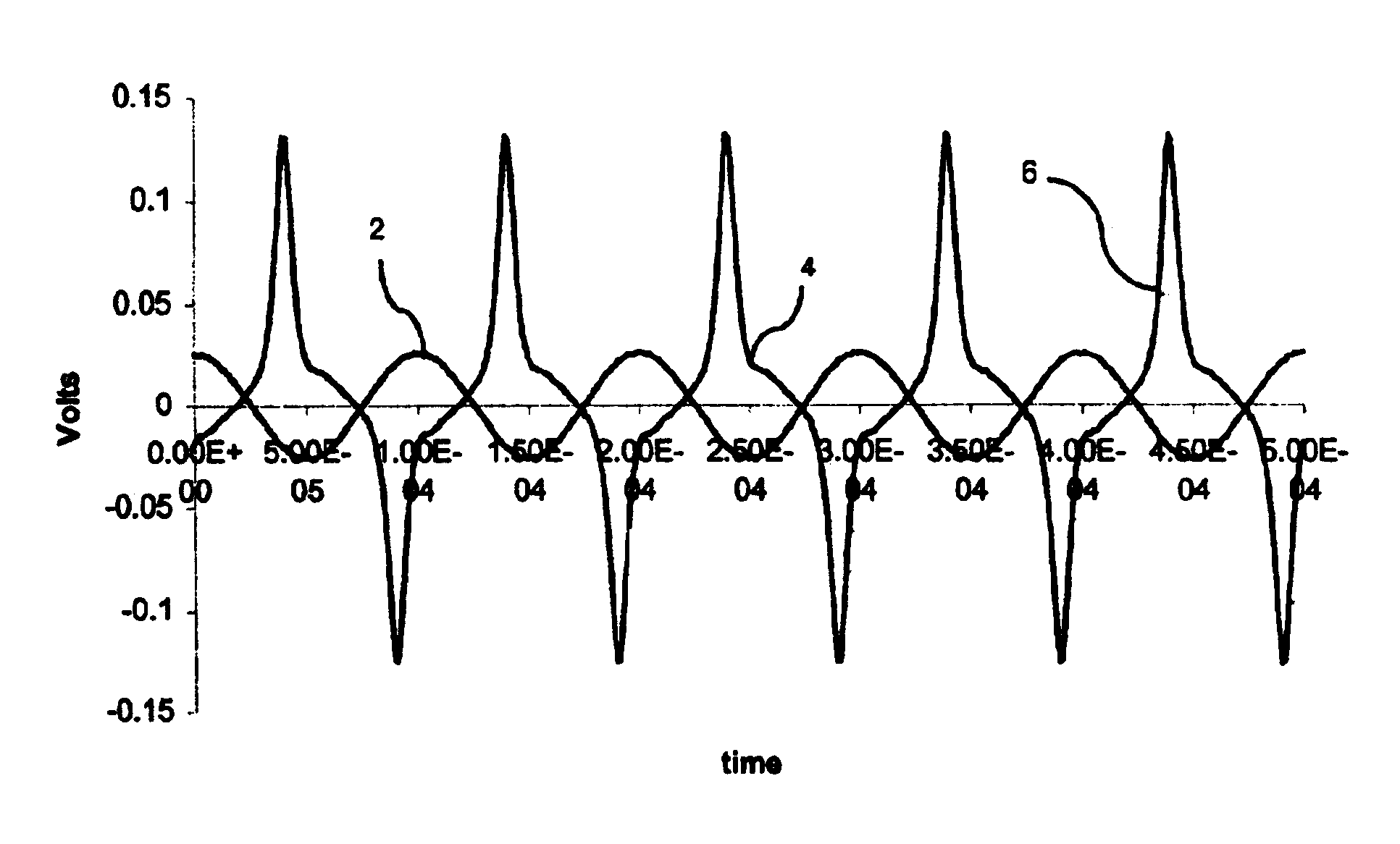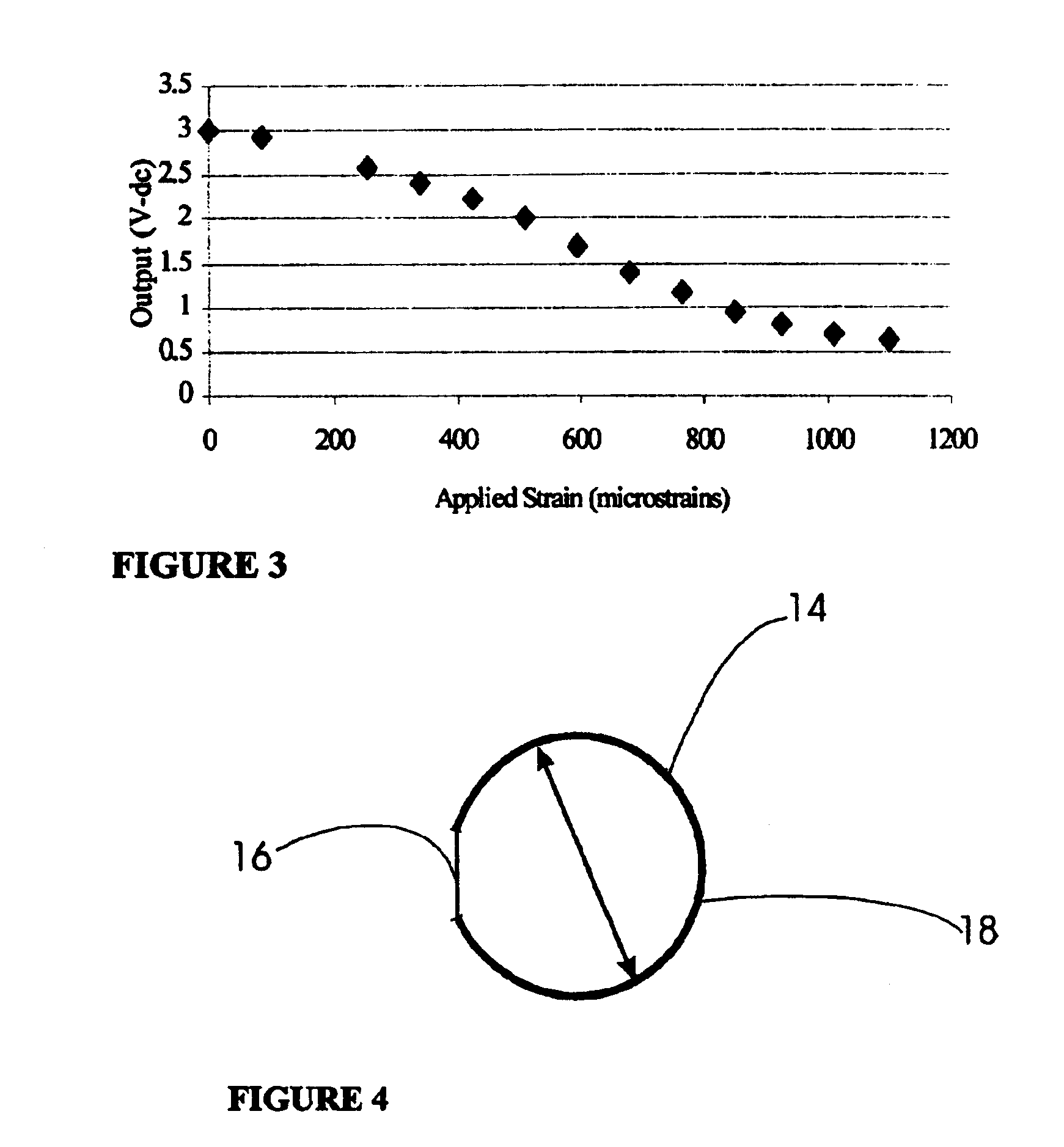Inductively coupled stress/strain sensor
a stress/strain sensor and inductive coupling technology, applied in the direction of mechanical measuring arrangement, instruments, using mechanical means, etc., can solve the problems of tragic consequences, unforeseen alteration of the factor of safety, and incorrect computation models of stress and strain
- Summary
- Abstract
- Description
- Claims
- Application Information
AI Technical Summary
Benefits of technology
Problems solved by technology
Method used
Image
Examples
example ii
[0070]FIG. 7 is a circuit diagram of a third embodiment of the invention showing the circuitry used to drive and monitor the sensor. Oscillator 34 generates a 10 kHz base excitation signal. Op amp 36 boosts the power of the 10 KHz excitation signal sent to remote excitation coil 38. Excitation coil 38 is an 80 turn coil in operative proximity to the sensor (not depicted). Sensing coil 40, which is in operative proximity to the sensor (not depicted) receives therefrom the non-linear signal and is a 10 turn coil connected to a demodulator system. The number of turns in each coil is neither fixed to the values above nor optimized; other values are possible.
[0071]While the excitation current in Example II is of 10 kHz frequency, the invention is not so limited, and frequencies from 0 to 1 MHz may be used, preferably in the range from 500 Hz to 250 kHz, more preferably in the range from 1 to 100 kHz, most preferably approximately 10 kHz.
[0072]The demodulator system comprises PLL 42 (a ph...
PUM
 Login to View More
Login to View More Abstract
Description
Claims
Application Information
 Login to View More
Login to View More - R&D
- Intellectual Property
- Life Sciences
- Materials
- Tech Scout
- Unparalleled Data Quality
- Higher Quality Content
- 60% Fewer Hallucinations
Browse by: Latest US Patents, China's latest patents, Technical Efficacy Thesaurus, Application Domain, Technology Topic, Popular Technical Reports.
© 2025 PatSnap. All rights reserved.Legal|Privacy policy|Modern Slavery Act Transparency Statement|Sitemap|About US| Contact US: help@patsnap.com



